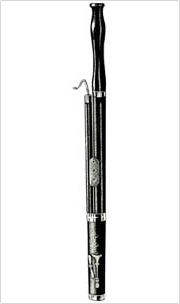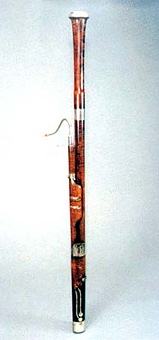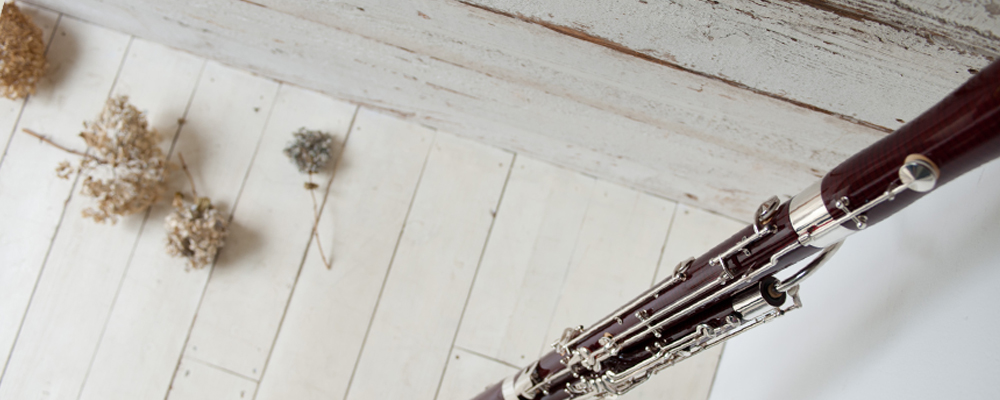The origins of the Bassoon
The Birth of the Bassoon
Does the bassoon have musical ancestors?
The bassoon is a woodwind instrument that produces sound in a low range, using a double reed, and has a distinctive shape, with a long tube that looks as though it has been folded in two.
The musical instruments that could be described as ancestors of the bassoon were developed in the 16th century, and include the shawm, the rankett, and the dulcian (or curtal). All of these are low-pitched instruments that use a double reed. Among them only the dulcian is shaped as though folded in two, making it the musical instrument one could describe as closest in shape to the modern bassoon.
Do the names "bassoon" and "fagotto" originate in the French language?
It is said that the name "fagotto" is derived from "fagottez", which is French for "a bundle of two wooden sticks." As the same word also exists in Italian, it is also said that the name originates from this Italian term instead. It is not precisely known when the name came to be used for the musical instrument, but it seems that, at least since the mid-17th century, a wooden wind instrument in a style that closely resembles its modern form has been known in France as the "fagotto."
The name "bassoon," used in the English-speaking world, also drives from a French word, "basson." Basson is a term used for a musical instrument similar to the earliest fagotto that also offered a low pitch range, and which started being referred to as the fagotto from the latter half of the 17th century.
An ever-increasing number of keys

A four-key bassoon
In the 18th century, bassoons with three or four keys were the most common. Then, in the latter half of the 18th century, bassoons equipped with 6 keys began to appear. However, the fingering varied depending on the manufacturer, and a standard design had yet to be established. Coincidentally, Mozart's "Bassoon Concerto" was written during this period.
German-style (Heckel-style) and French-style
In the first half of the 19th century, German military bandmaster Carl Almenräder began efforts to improve the bassoon. The bassoon at that time typically had 8 keys, but Almenräder increased the number of keys, making repeated innovations such as improving the part of the instrument where its tube bends back on itself, known as the "U-tube", making the pitch easier to control, and increasing the instrument's volume. The fruits of these efforts, passed down via musical instrument maker Johann Adam Heckel who worked with Almenräder, have now come to be known as the German-style (Heckel-style) model of bassoon. Instruments in the German-style have spread across Italy, the U.K. and the United States.
In France, on the other hand, the traditional structure of the bassoon has survived throughout its lineage to modern instruments. These instruments are usually referred to as the "basson," and are said to be of the "French-style," in contrast to the "German-style." However, it's true to say that the overwhelming majority of instruments in use today are of the German style.

The basonore, made in France in the first half of the 19th century (made to a custom specification for use by military bands)
Musical Instrument Guide : Bassoon Contents
Structure
- What Kind of Musical Instrument is a Bassoon?
- A Long Tube that can be Separated
- The Bocal and its Various Functions
- Unique Features of the bassoon, and How to Play
- [Experiment1]Comparing the Sound of Tone Holes cut Obliquely and Perpendicular
- [Experiment2]Encasing the Bore in Various Materials
- Bonus Experiment
How to Play
How the Instrument is Made
Choosing an Instrument
Trivia
- An Instrument that is Sensitive to Humidity
- Sounds from water in the U-tube?
- There's a needle in the bocal?!
- Comments by conductors caused popularity to tumble?
- Bassoon classics - Chamber music works
- Bassoon classics - Concertos
- Is the "contra-fagotto" a contrabassoon?
- What is the best tool to file a reed?

